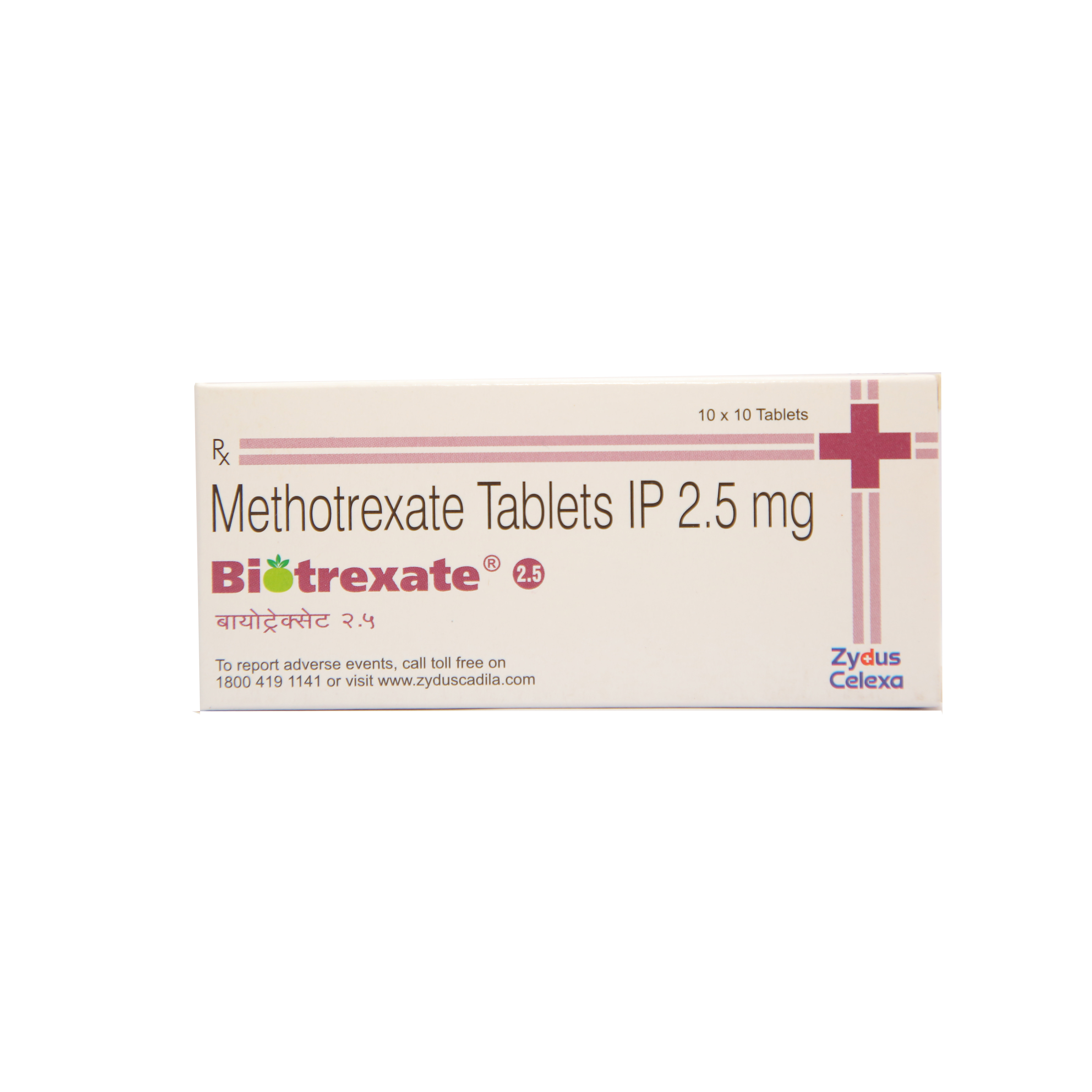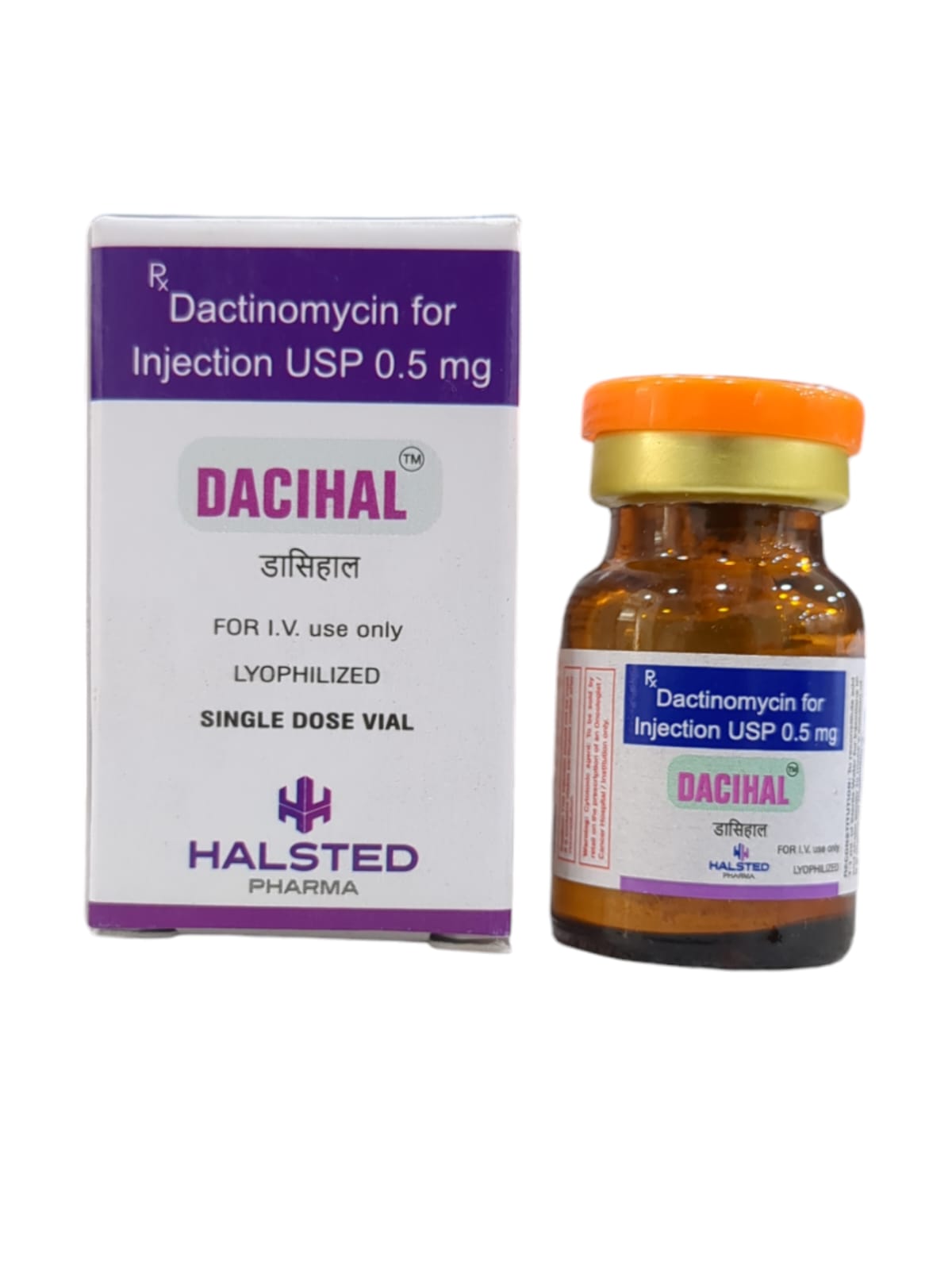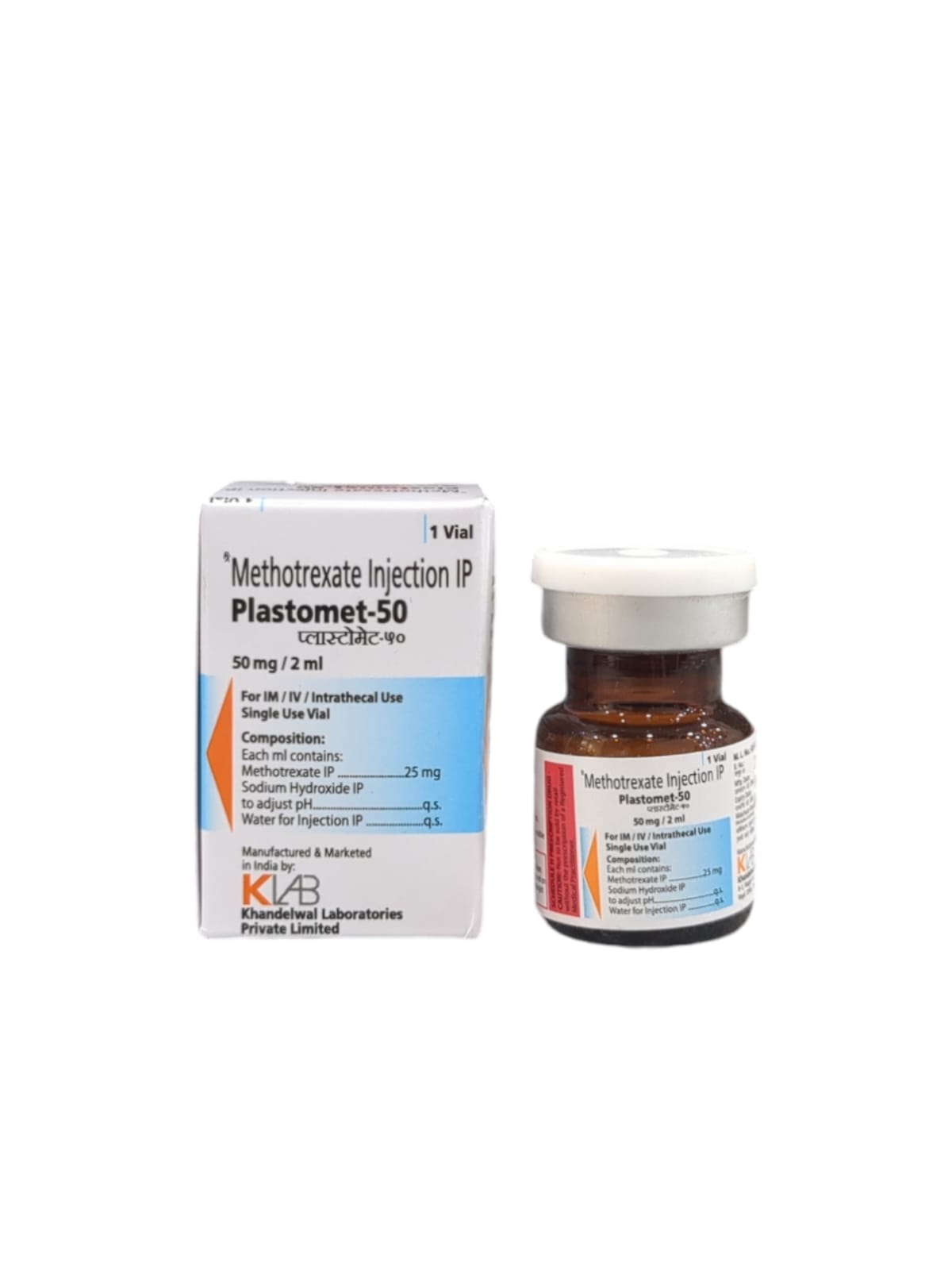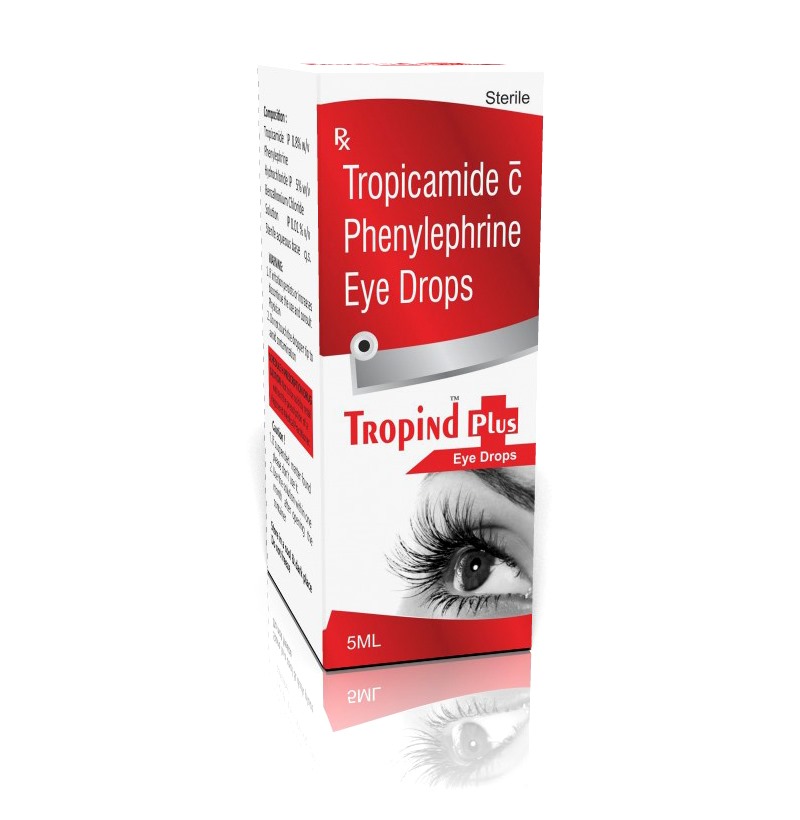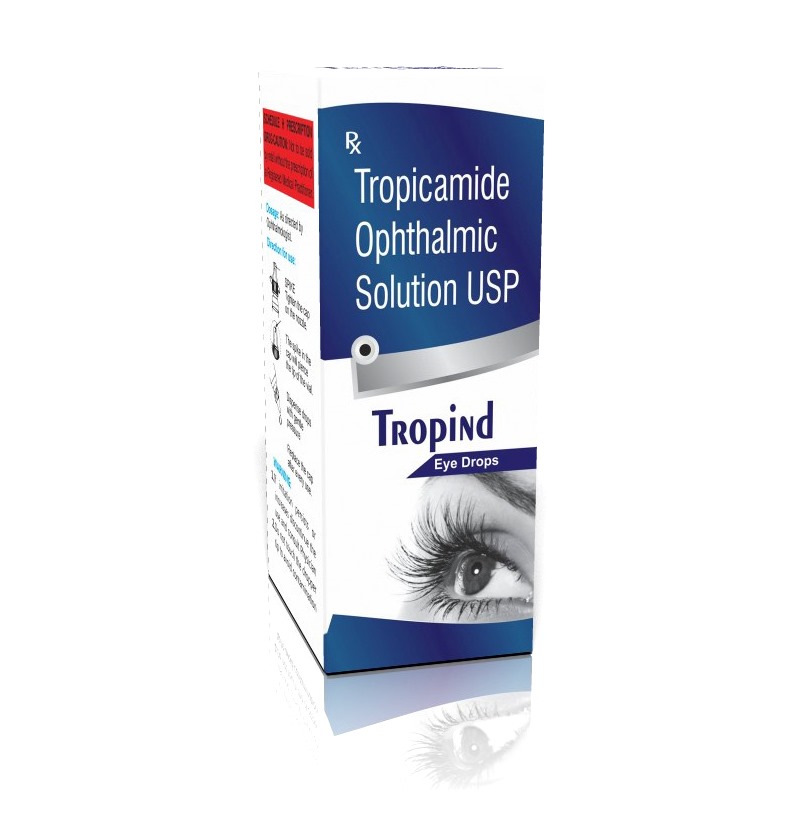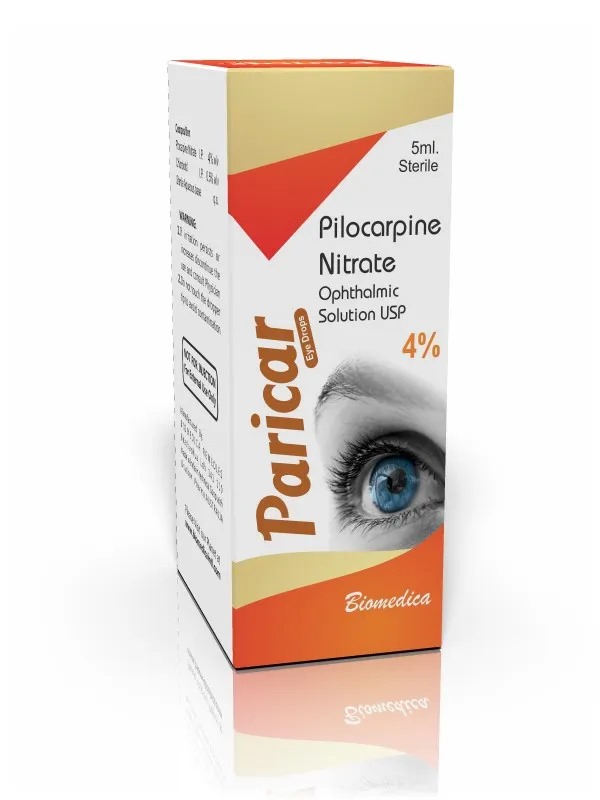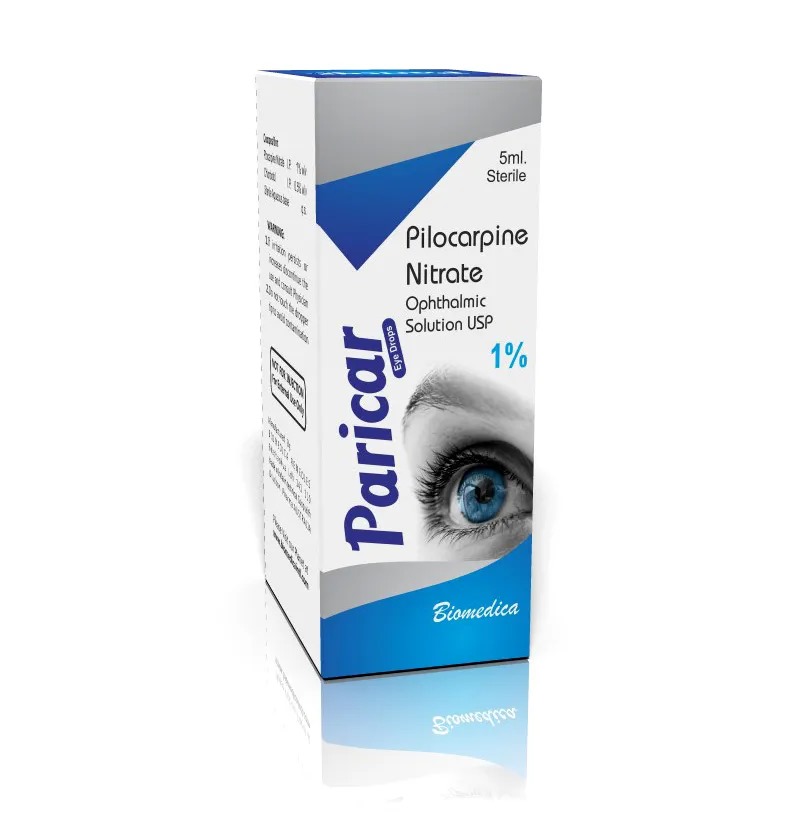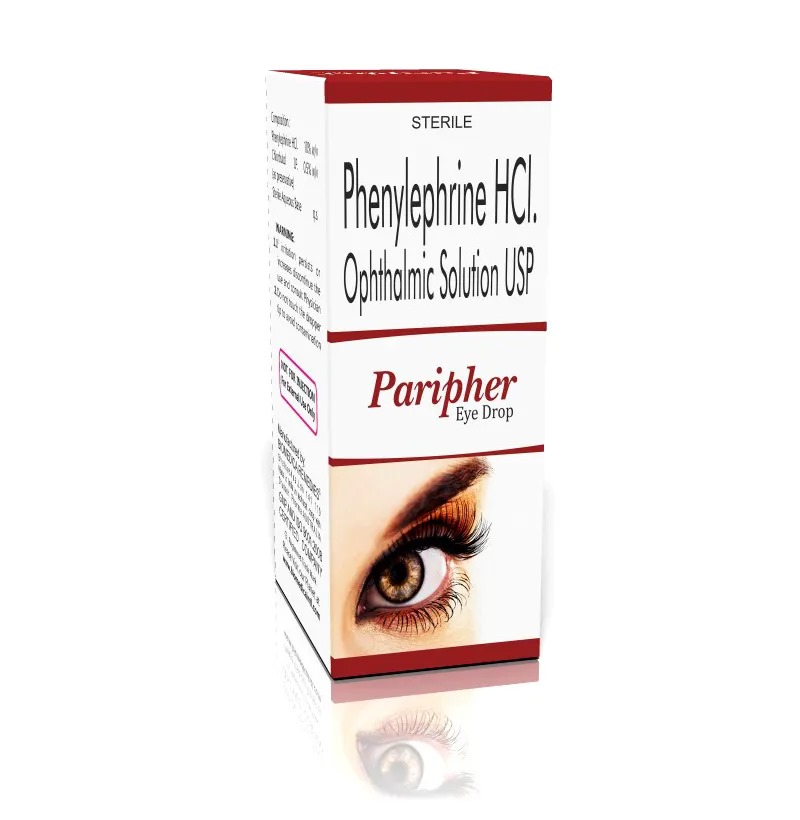Anti Cancer Medicine
Marketer
Khandelwal Laboratories Pvt Ltd
SALT COMPOSITION
Methotrexate (50mg)
Storage
Store below 30°C
Uses of Plastomet Injection
Treatment of Cancer
Product introduction
Plastomet 50 Injection is a medicine used for treatment of cancer in various parts of the body such as breasts, head, neck, lungs, blood, bone, lymph, and uterus. It may be used with other medicines as part of combination therapy.
Plastomet 50 Injection is given under the supervision of a healthcare professional and should not be self-administered. Your doctor will decide what dose is necessary and how often you need to take it. This will depend on what you are being treated for and may change from time to time. You should take it exactly as your doctor has advised. Taking it in the wrong way or taking too much can cause very serious side effects. It may take several weeks or months for you to see or feel the benefits but do not stop taking it unless your doctor tells you to. You should avoid drinking alcohol as it may increase your risk of liver damage.
The most common side effects of this medicine include nausea, vomiting, loss of appetite, abdominal pain, tiredness, mouth sores, and decreased white blood cells. Your doctor may advise you to take folic acid to reduce some of these. If they do not go away or get worse, tell your doctor. There may be ways of preventing or reducing these effects. It is a very strong medicine and some people may develop serious side effects while taking it. This medicine may lower your ability to fight infections and lead to problems with your blood, liver, or kidneys. Your doctor will advise you regular blood tests to check for these.
Before taking it, tell your doctor if have stomach, liver, or kidney problems or are taking any medicines to treat infections. Many other medicines can affect, or be affected by, this medicine so let your healthcare team know all medications you are using. This medicine is not recommended during pregnancy or while breastfeeding. It may harm your baby. You and your partner should avoid becoming pregnant or fathering a child for several months after your treatment with it has stopped. Your doctor may perform several tests such as blood tests, X-rays, and physical examinations both before and during treatment with this medicine.
Benefits of Plastomet Injection
In Treatment of Cancer
Plastomet 50 Injection belongs to a group of medicines called antimetabolites and is referred to as a cytotoxic. It works by slowing the growth of cancer cells in the body. It is used to treat a wide range of cancers such as acute leukemias, non-Hodgkin’s lymphoma, and solid tumors found in breast, lung, bladder, head and neck as well as cervical, ovarian and testicular cancer. It may be given alone or in combination with other medicines. It is a potent and very toxic medicine and you should discuss the risks and benefits with your doctor. You should avoid drinking alcohol while having this treatment and drink plenty of water to stay hydrated.
Side effects of Plastomet Injection
Most side effects do not require any medical attention and disappear as your body adjusts to the medicine. Consult your doctor if they persist or if you’re worried about them
Common side effects of Plastomet
Abdominal pain
Indigestion
Loss of appetite
Nausea
Vomiting
Tiredness
Mouth sore
Decreased white blood cell count
How to use Plastomet Injection
Your doctor or nurse will give you this medicine. Kindly do not self administer.
How Plastomet Injection works
Plastomet 50 Injection is an anti-cancer medication. It works by blocking an enzyme (dihydrofolate reductase) involved in DNA synthesis in cancer cells. This slows the growth of cancer cells and eventually kills them.
Safety advice
warnings
Alcohol
CAUTION
Caution is advised when consuming alcohol with Plastomet 50 Injection. Please consult your doctor.
warnings
Pregnancy
UNSAFE
Plastomet 50 Injection is highly unsafe to use during pregnancy. Seek your doctor's advice as studies on pregnant women and animals have shown significant harmful effects to the developing baby.
warnings
Breast feeding
UNSAFE
Plastomet 50 Injection is unsafe to use during breastfeeding. Data suggests that the drug may cause toxicity to the baby.
warnings
Driving
UNSAFE
Plastomet 50 Injection may decrease alertness, affect your vision or make you feel sleepy and dizzy. Do not drive if these symptoms occur.
warnings
Kidney
CAUTION
Plastomet 50 Injection should be used with caution in patients with kidney disease. Dose adjustment of Plastomet 50 Injection may be needed. Please consult your doctor.
Regular monitoring of kidney function test is advised while you are taking this medicine.
warnings
Liver
CAUTION
Plastomet 50 Injection should be used with caution in patients with liver disease. Dose adjustment of Plastomet 50 Injection may be needed. Please consult your doctor.
Use of Plastomet 50 Injection is not recommended in patients with severe liver disease.
Send
Message
